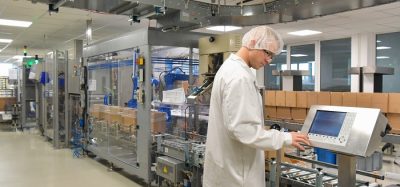Understanding endotoxin cartridge testing: frequently asked questions
Posted: 21 November 2024 | Charles River | No comments yet
Charles River’s Courtney Wachtel and Sherri Hopple discuss endotoxin cartridge testing, its application and how it differs from traditional BET assays.


Can cartridges be used as a standard method for assessing endotoxins across various sample types throughout the industry?
A: FDA-licensed cartridges utilise the kinetic chromogenic method and are fit to test any type of endotoxin sample including, but not limited to, waters, raw materials, in-process samples, final products, medical devices and radiopharmaceuticals.
Are LAL and rCR cartridges licensed by the FDA?
The LAL reagents included in the cartridges are licensed by the US Food and Drug Administration (FDA). However, recombinant reagents, including both rFC and rCR, are not currently licensed. Charles River has worked alongside other recombinant manufacturers to petition for licensure with the FDA; however, it is still unclear if FDA will require Biological License Applications (BLAs) for rFC and rCR manufacturers in the future. It is important to note that Charles River’s licensed LAL cartridges are manufactured as required by good manufacturing practices (GMP) and BLA #1197, and to maintain these standards we also manufacture our rCR cartridges per these same requirements.
Has Charles River adequately verified the accuracy of the LAL and rCR cartridges’ archived standard curves for BET?
Archived standard curves are thoroughly tested and quality controlled by Charles River. This ensures less variability than user-prepared standard curves, and every assay includes a positive control to check for accuracy. It is also important to note that archived standard curves are accepted by regulatory agencies and Charles River’s internal testing requirements are actually more stringent, as our internal requirements impose a linearity of 0.99 rather than the 0.98 outlined by regulations.
Why does the CV limit vary between traditional BET methods and the cartridge method?
USP, EP and FDA guidelines do not define CV limits for bacterial endotoxin testing (BET) assays; however, the industry acceptance is a CV of 10 percent for a standard microplate test. As the CV is calculated from reaction times, for cartridges, a CV of 25 percent reflects an equal (if not more stringent) requirement when considering the total reaction time of the assay. Faster reaction times require a slightly higher limit since smaller changes result in a greater difference in the CV than with slower kinetic methods. The less than 25 percent CV requirement for cartridges has also been approved by the FDA based on statistical analysis provided under BLA #1197.
Given the differences between the traditional BET and cartridge assays, especially the smaller sample volume and varying operator handling, what are the benefits of using the Endosafe cartridge instruments alongside Endosafe cartridges?
First, accuracy of pipetting is a critical aspect of all BET methods, not just Endosafe cartridges. For a trained and qualified analyst, the ability to pipette 25µL of sample accurately across four wells for a cartridge is no more difficult than accurately pipetting 100µL of sample, or the 10µL spike, used in traditional kinetic methods. Excessive variation in pipetting can be detected by spike recovery failures, visual inspection, or the instrument’s on-board monitoring tools, some of which are unavailable for conventional methods. The cartridge test’s sensitivity is sufficient for a range of endotoxin limits and sample types, plus cartridge instruments are simple to use, require minimal handling, and are calibrated and qualified annually to ensure proper function. It’s important to note again that Charles River’s cartridges meet USP and EP standards and are FDA-approved for BET.
For further information, visit:
www.criver.com
About the authors


Courtney Wachtel, BS is Product Manager, Microbial Solutions, Charles River – Endosafe. Courtney focuses on endotoxin detection assays and services for the Microbial Solutions division. She has a BS in biology from Georgia Tech, certifications in integrative and biomedical biology, and 10 years of experience in the pharmaceutical industry.


Sherri Hopple is Scientific Portfolio Specialist, Microbial Solutions, Charles River – Endosafe. Sherri Hopple is a subject matter expert in bacterial endotoxin testing. With over 22 years of experience, she has worked as a QC microbiologist in cell therapy and non-sterile pharmaceutical manufacturing, specialising in environmental monitoring and method validation.









